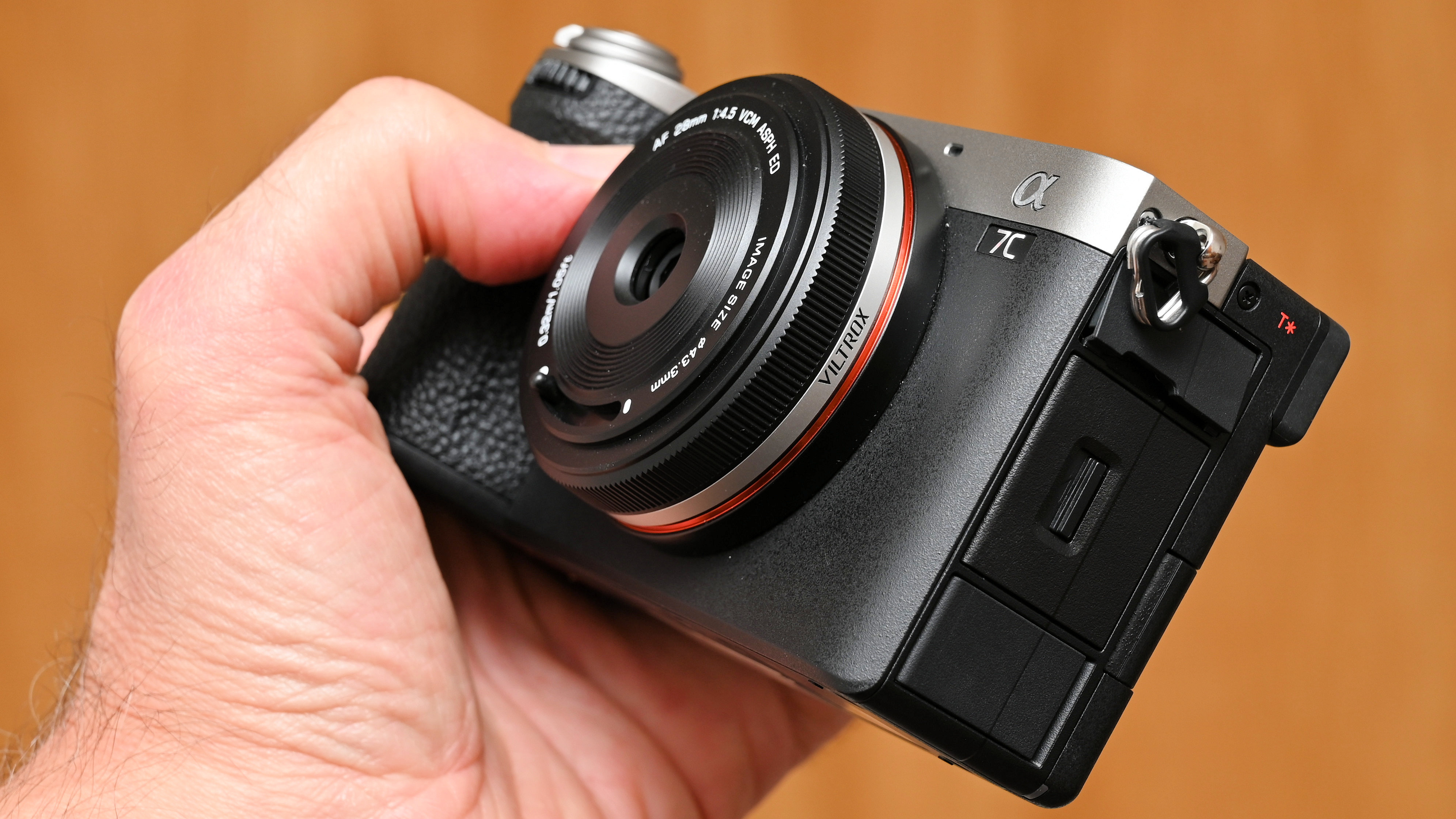
Viltrox is a Chinese manufacturer that has really impressed me with many of its autofocus lenses for full-frame and crop-sensor mirrorless cameras, over the last three years. Indeed, I’ve enjoyed reviewing some of them so much that I’ve bought several of them for my permanent collection. They tend to be really nicely made, excellent performers and standout value for money. My current Viltrox stash includes the fast, metal-bodied Viltrox AF 23mm F1.4 Z, Viltrox AF 33mm F1.4 Z, and Viltrox AF 56mm F1.4 Z primes, plus the slightly larger Viltrox AF 13mm F1.4 Z which I use on my Nikon Z fc camera. The 28mm pancake lens that I’m reviewing here is a different kind of lens, with the emphasis on being incredibly small and lightweight. Even so, it’s full-frame compatible and aims to one of the most affordable lenses for Sony E-mount cameras. It’s equally viable for use on Sony APS-C format mirrorless cameras, where it gives an ‘effective’ focal length of 42mm, and thus a very natural perspective rather than a wide viewing angle.
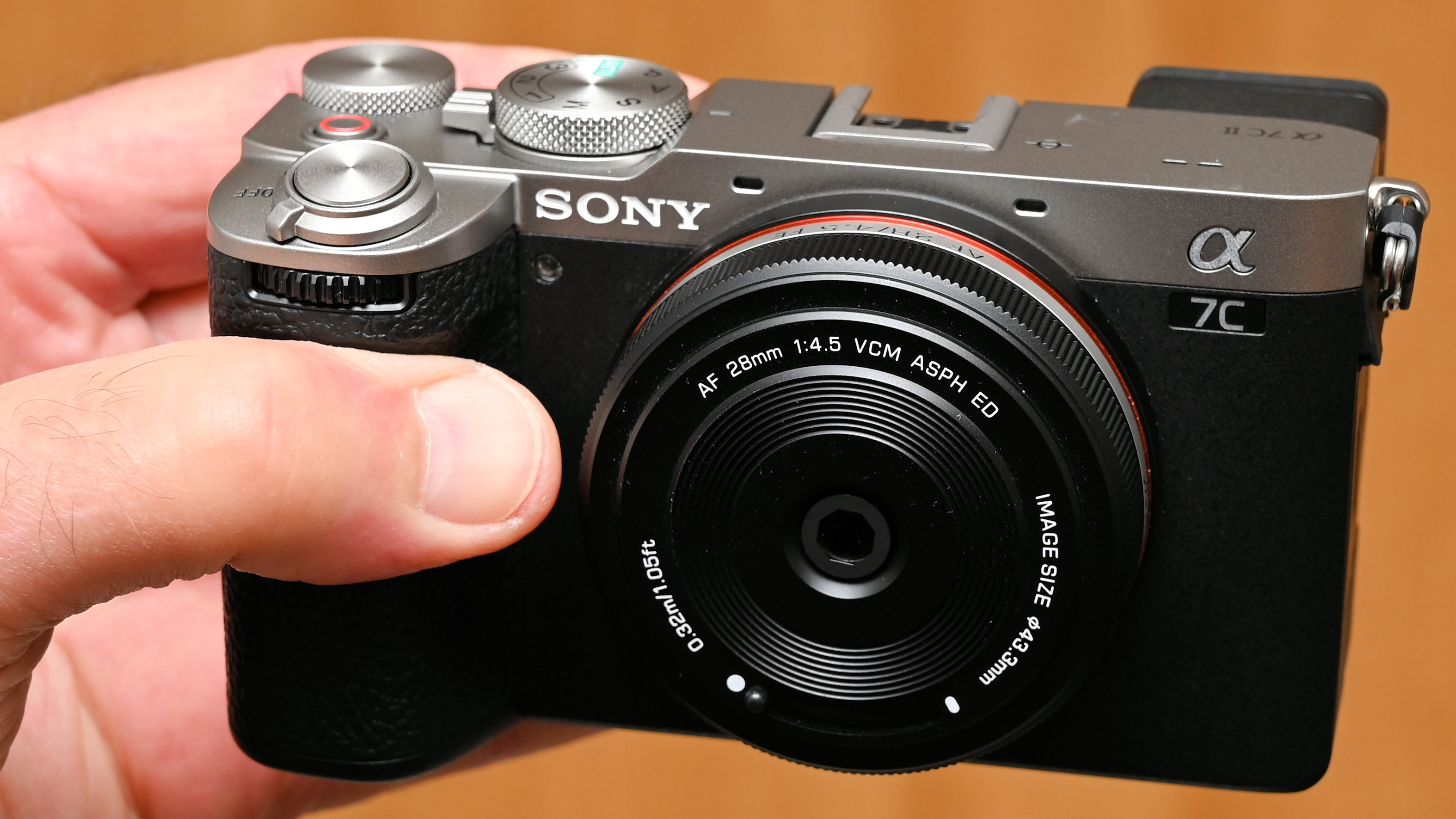
Viltrox AF 28mm F4.5 FE: Specifications
Viltrox AF 28mm F4.5 FE: Price
I tested the Viltrox AF 28mm F4.5 FE in September 2024, before it actually went on sale. The launch was imminent and the selling price was heavily rumored to be just $99. That makes it amazingly inexpensive for a full-frame compatible lens that features autofocus although the aperture is fixed at f/4.5 so there’s no adjustable diaphragm nor the electronics that go with it.
Viltrox AF 28mm F4.5 FE: Design & Handling
The key factors in the design of the Viltrox AF 28mm F4.5 FE are compactness and lightweight construction. Measuring just 15mm / 0.59” thick and weighing a mere 60g / 2.1oz, I can’t readily think of many other full-frame compatible pancake lenses that are so small and light. Even so, there’s a fair bit packed into this diminutive lens. For starters, it has six optical elements arranged in six groups, featuring two aspherical elements and two ED (Extra-low Dispersion) elements. More remarkably, it features a quick and virtually silent autofocus system, based on a voice coil motor.
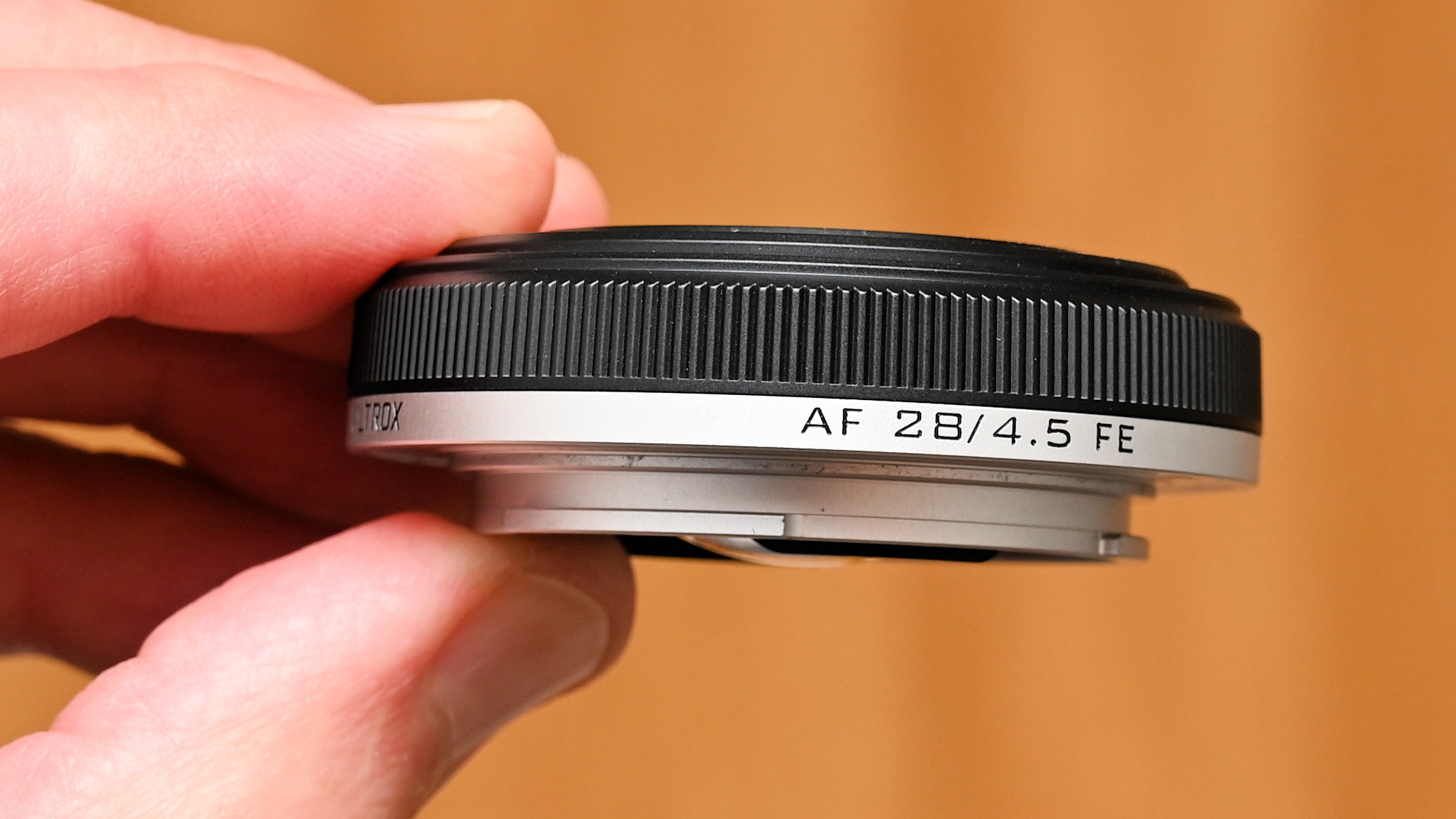
Another surprise, given the featherweight design, is that the lens has a mostly metal construction. It includes a metal mounting plate with gold-plated electronic contacts and even a USB-C port for applying firmware updates if and when needed.
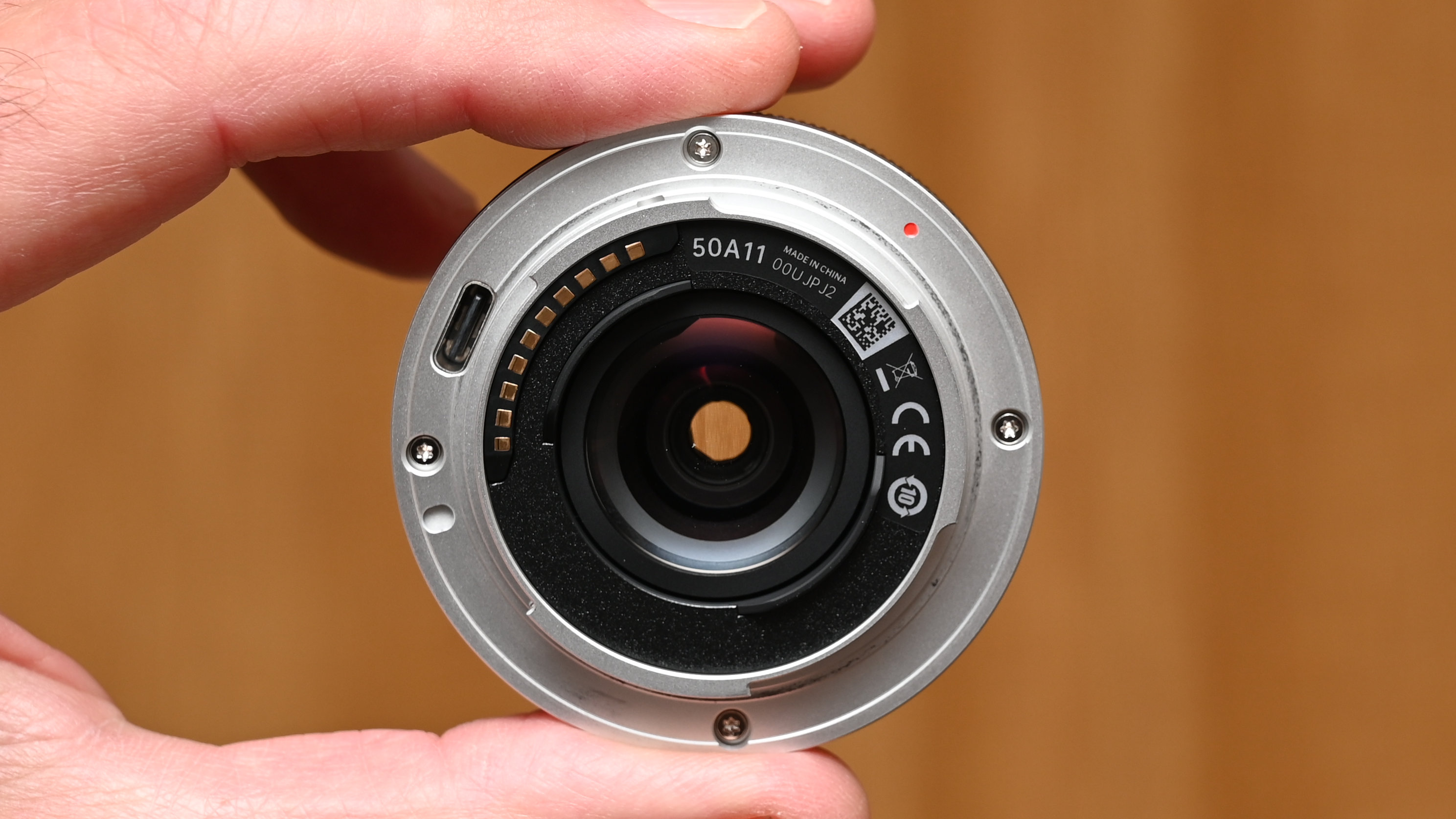
Up front, there’s a built-in sliding cap to shield the front element, which is operated by a lever on the front of the lens. That’s another space-saver, although there’s no hood. I’d consider buying a screw-in hood separately but there’s no filter attachment thread either. Back on the plus side, the lens features HD Nano multi-layer coating and a fluorine moisture-repellant coating on the front element. Around the back of the lens itself, there’s a conventional bayonet-fit rear cap.
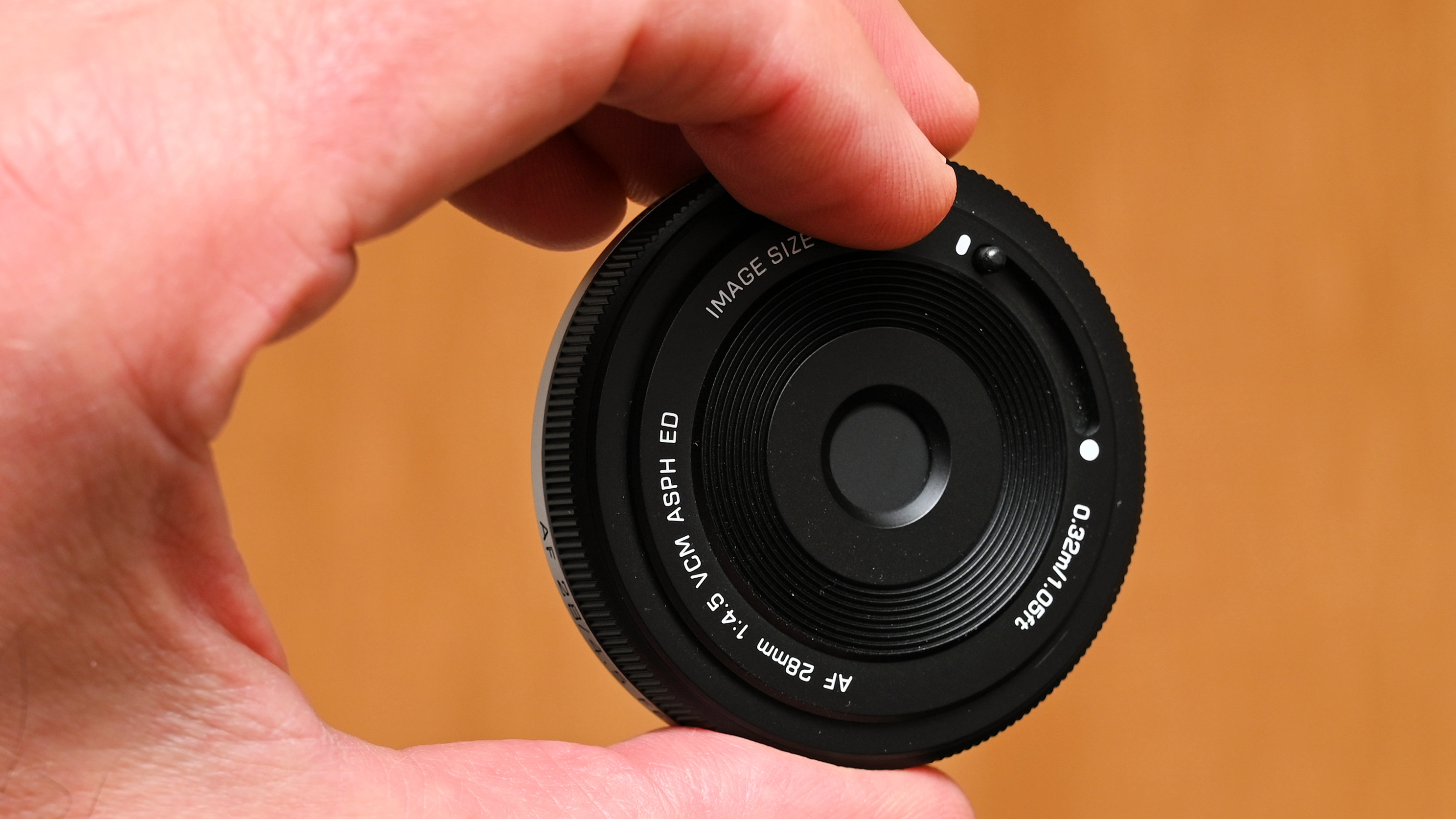
When designing a lens this small, something has to give. Sure enough, the Viltrox lacks an adjustable aperture diaphragm, which saves both size and weight as well as cost. Instead, it has a fixed aperture of f/4.5. The aperture itself isn’t circular but has an 8-sided shape.
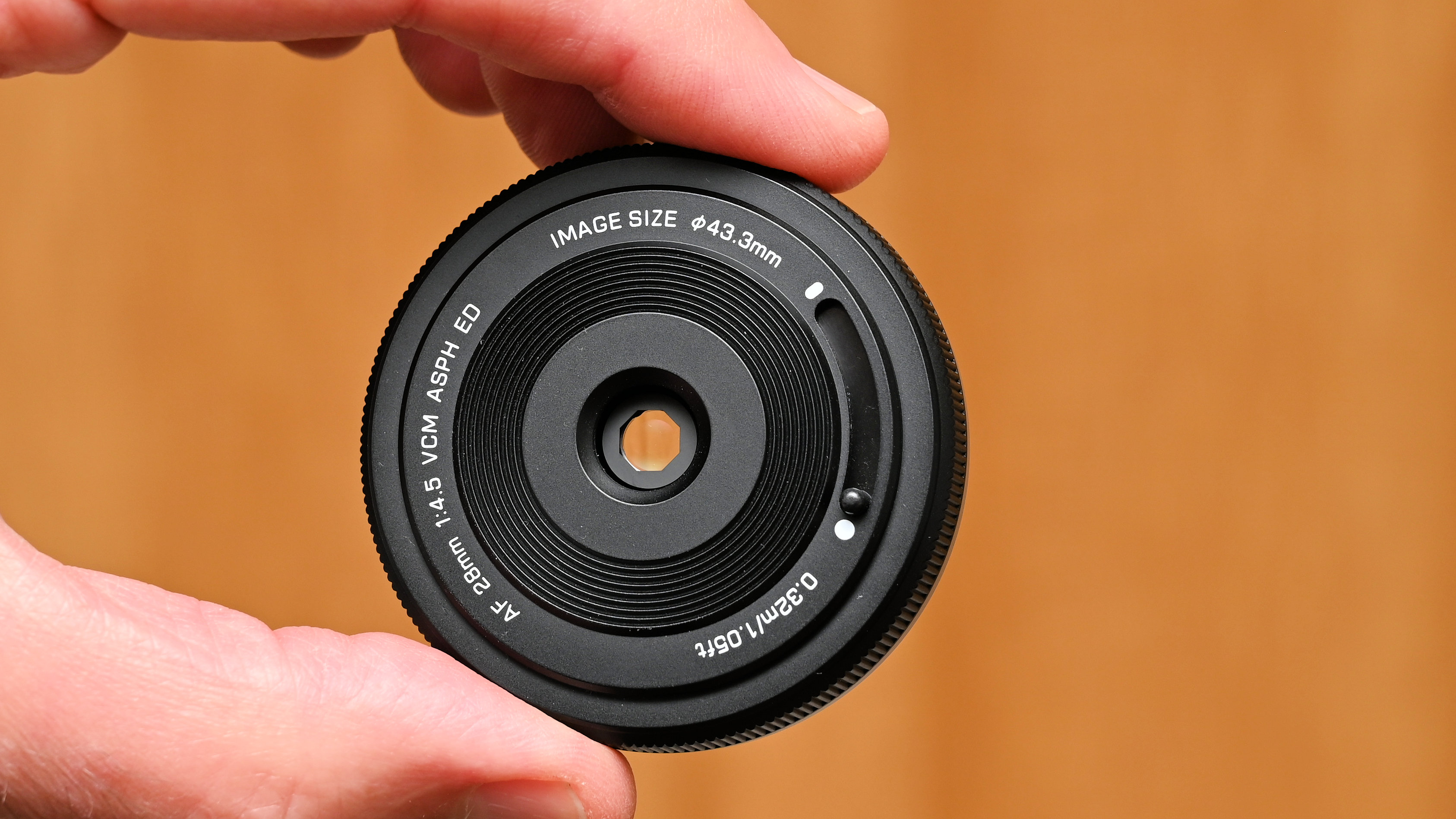
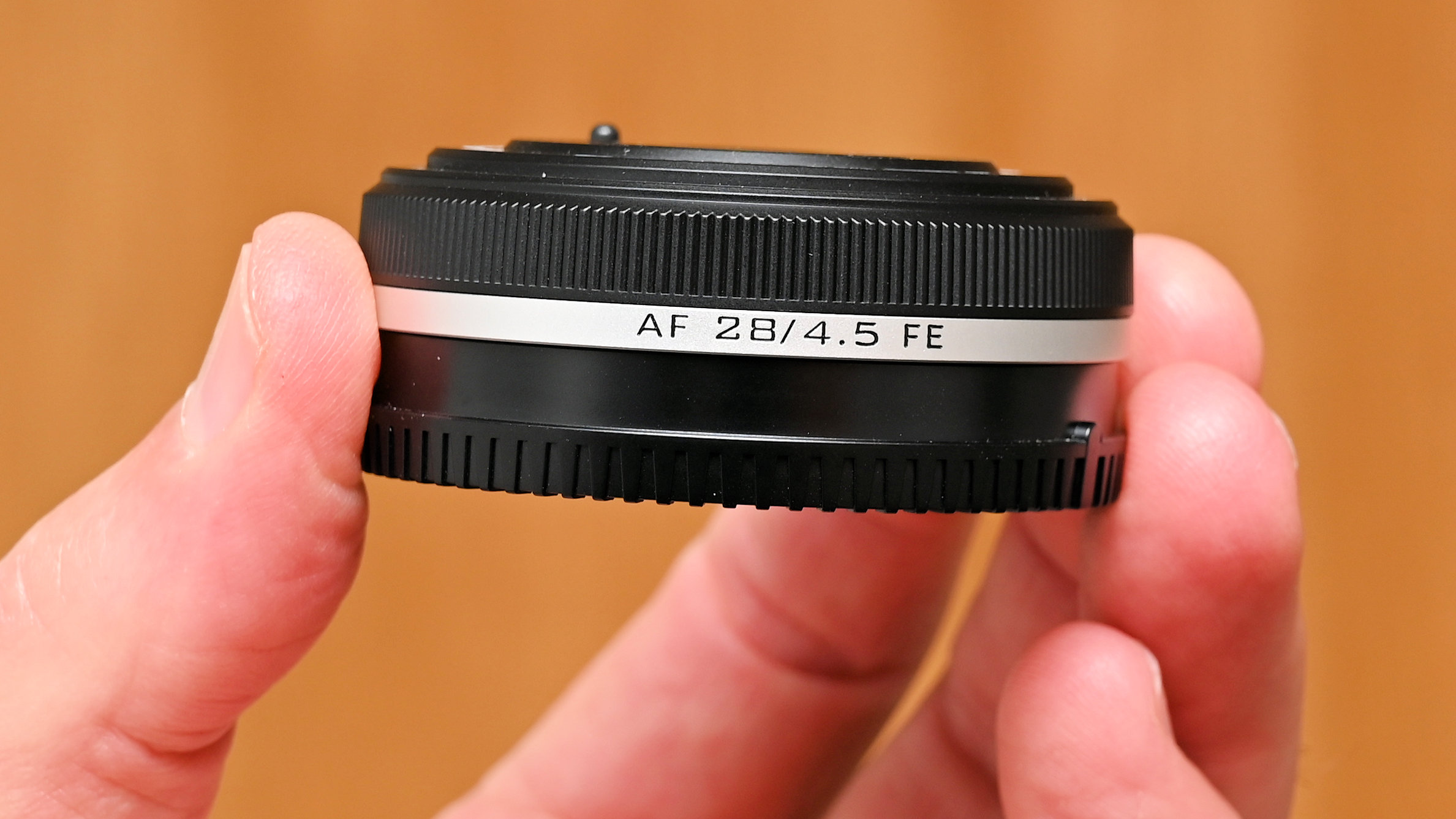
Viltrox AF 28mm F4.5 FE: Performance
When I think of really small, lightweight lenses, street photography springs to mind. It’s a genre where I often want to be as inconspicuous as possible, not drawing attention to myself with a big camera outfit. A lightweight camera and lens combo is also great for walkabout and travel photography. A focal length of 35mm is often preferred but I actually like the wider viewing angle of a 28mm lens for general shooting with a prime lens. I tested the Viltrox with a Sony A7C II. It’s a very compact camera body and the lens definitely follows suit. It’s so thin that, when it’s mounted on the camera, the front edge only protrudes as far as the camera’s hand grip. That’s really quite something.
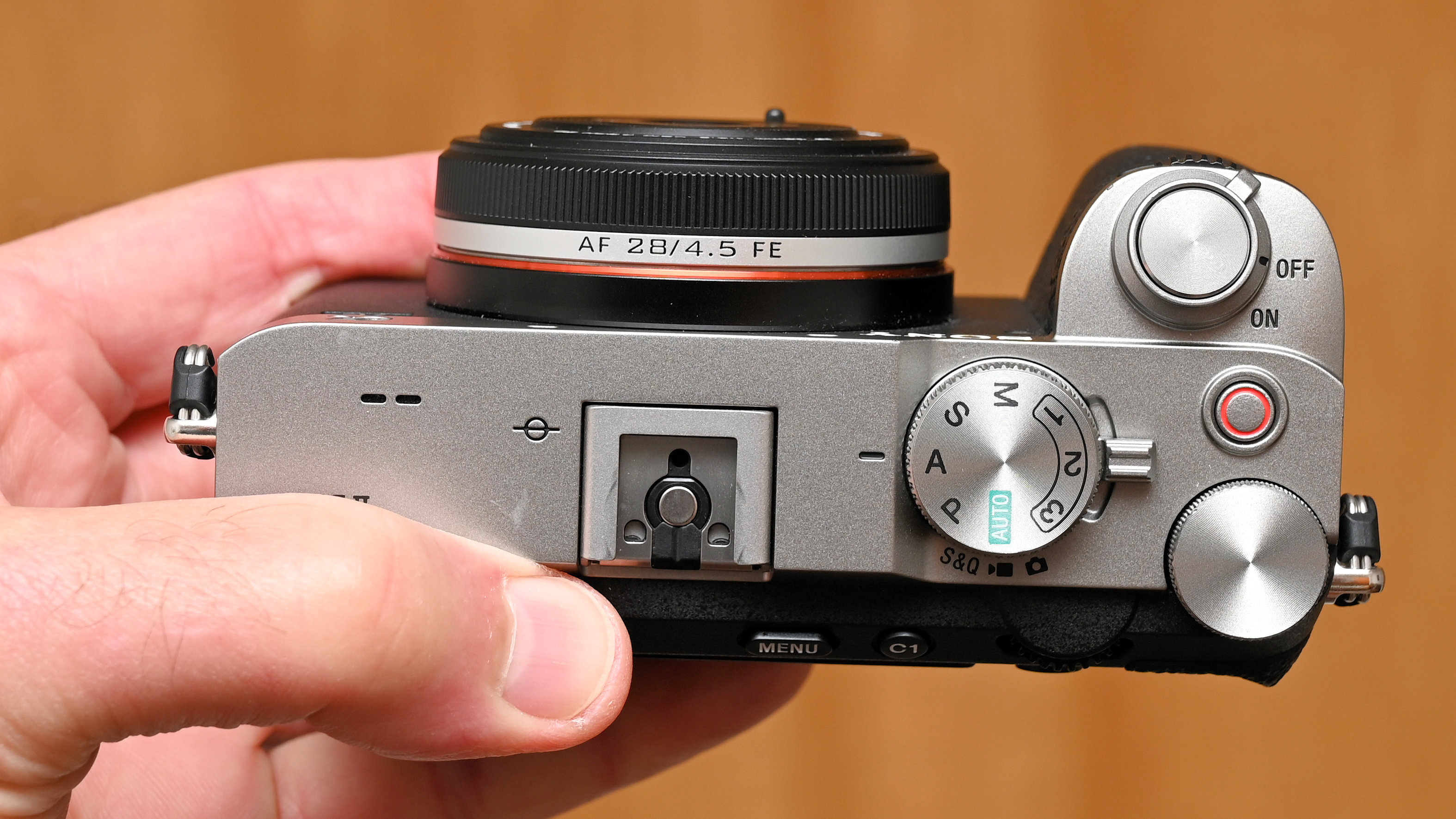
I found autofocus to be typically nimble and virtually silent, for a voice coil motor system. One frustration for traditional street photography is that there’s no provision for manual focusing, as there’s no manual focus ring. It’s autofocus or nothing. Even so, I found that autofocus was not only rapid but consistently reliable.
Not being able to adjust the aperture can also be a frustration but f/4.5 generally works pretty well. It enables fairly fast shutter speeds in bright lighting conditions, which you can maintain in dull scenarios by hiking up your camera’s ISO a bit. The combination of focal length and aperture give a pretty good depth of field for general shooting, while also enabling you to blur the background to some extent when shooting close-ups.
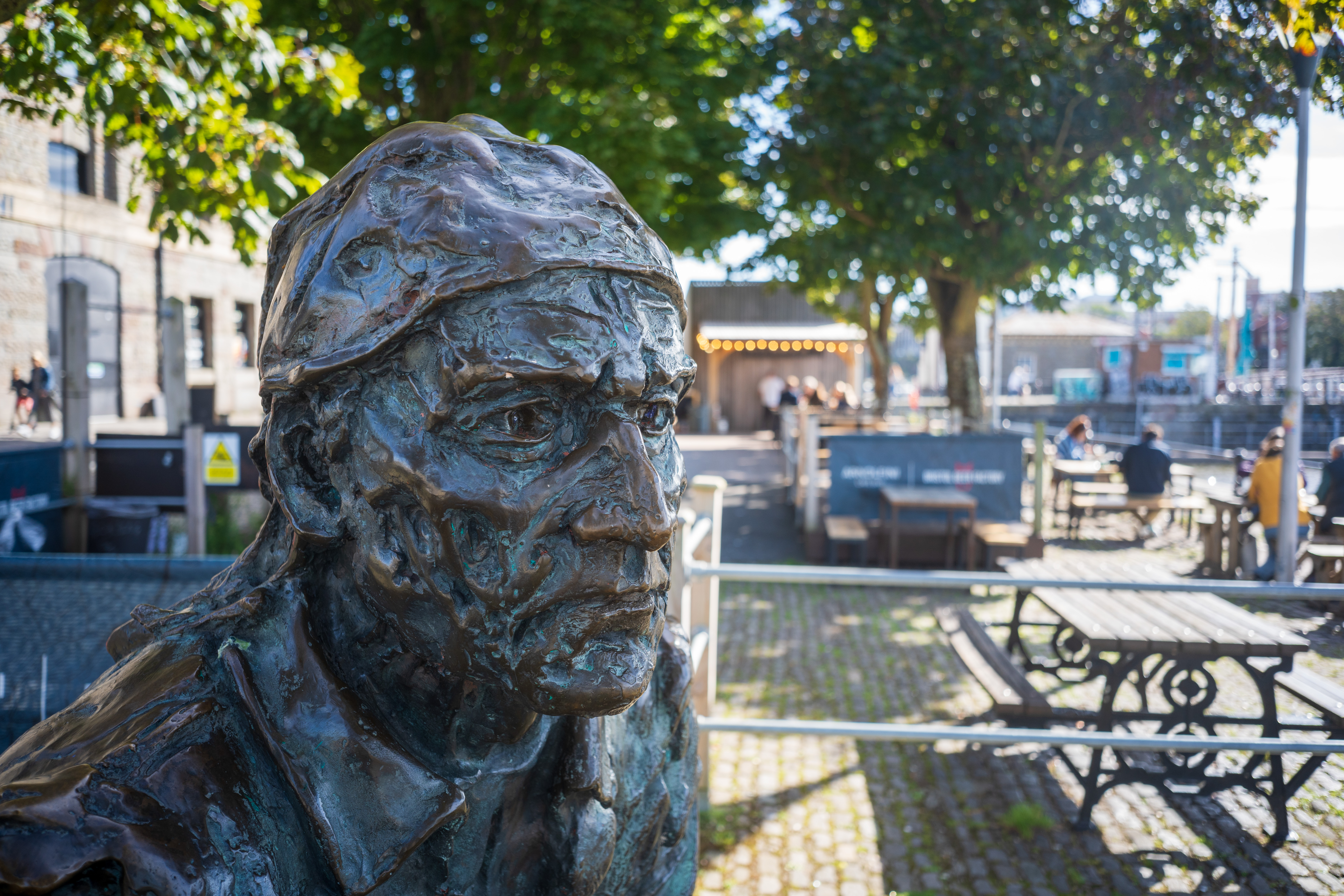
Sharpness is very good in the central region of the image frame, pretty average in the outlying area and quite mediocre at the edges and corners. Color fringing can also be very noticeable towards the edges and corners of the frame, if you don’t take advantage of automatic in-camera correction or fix it at the editing stage. Better news is that there’s only a hint of barrel distortion, even when uncorrected.
My only real gripe about the lens’s performance is that I found it was prone to flare when shooting against the light, or with the sun high in the sky but not behind me. A lens hood would certainly be a bonus but there simply isn’t one for this lens.

Viltrox AF 28mm F4.5 FE: Sample Images
The gallery of sample images below was shot in bright sunny weather at the floating harbor in Bristol, UK.
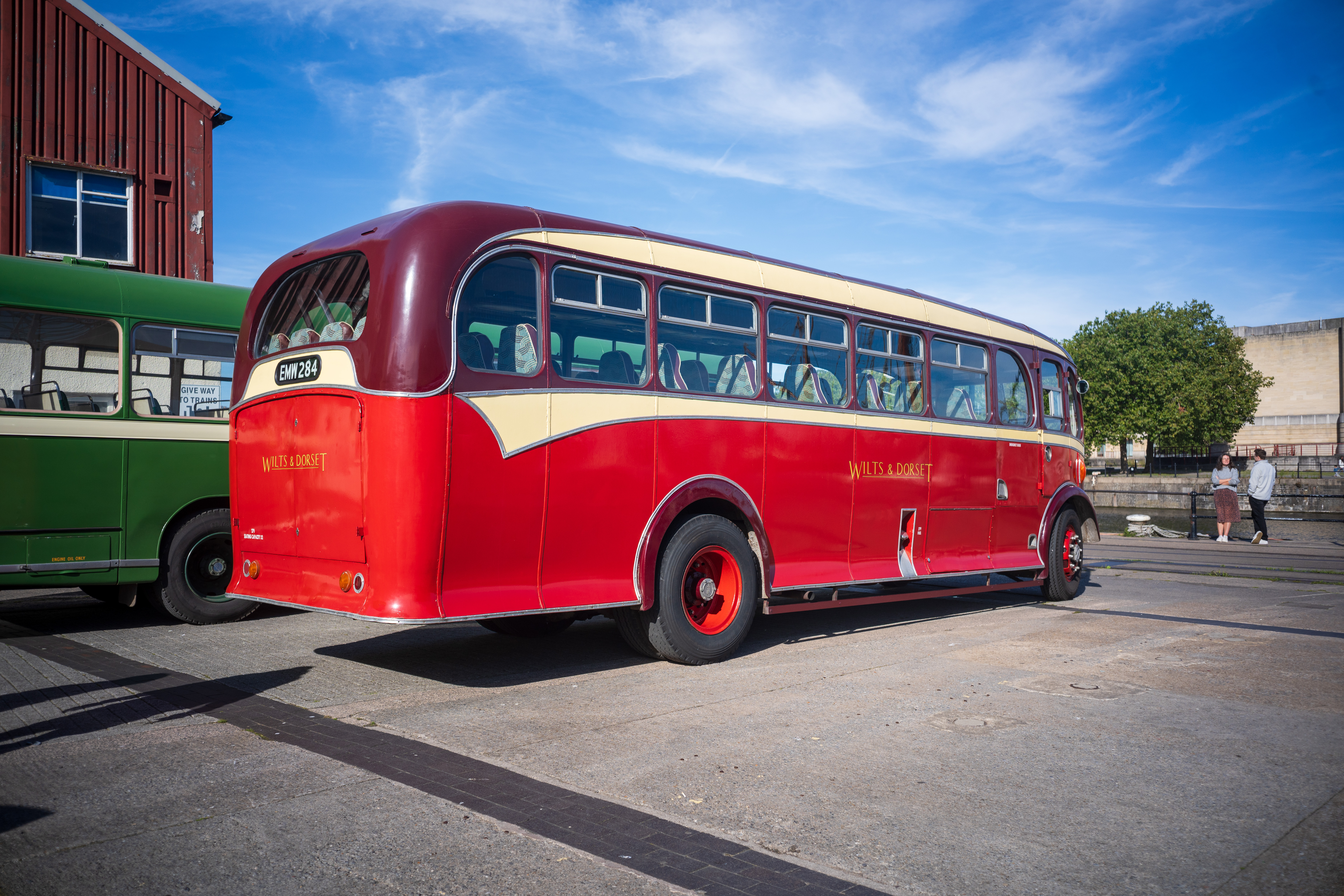
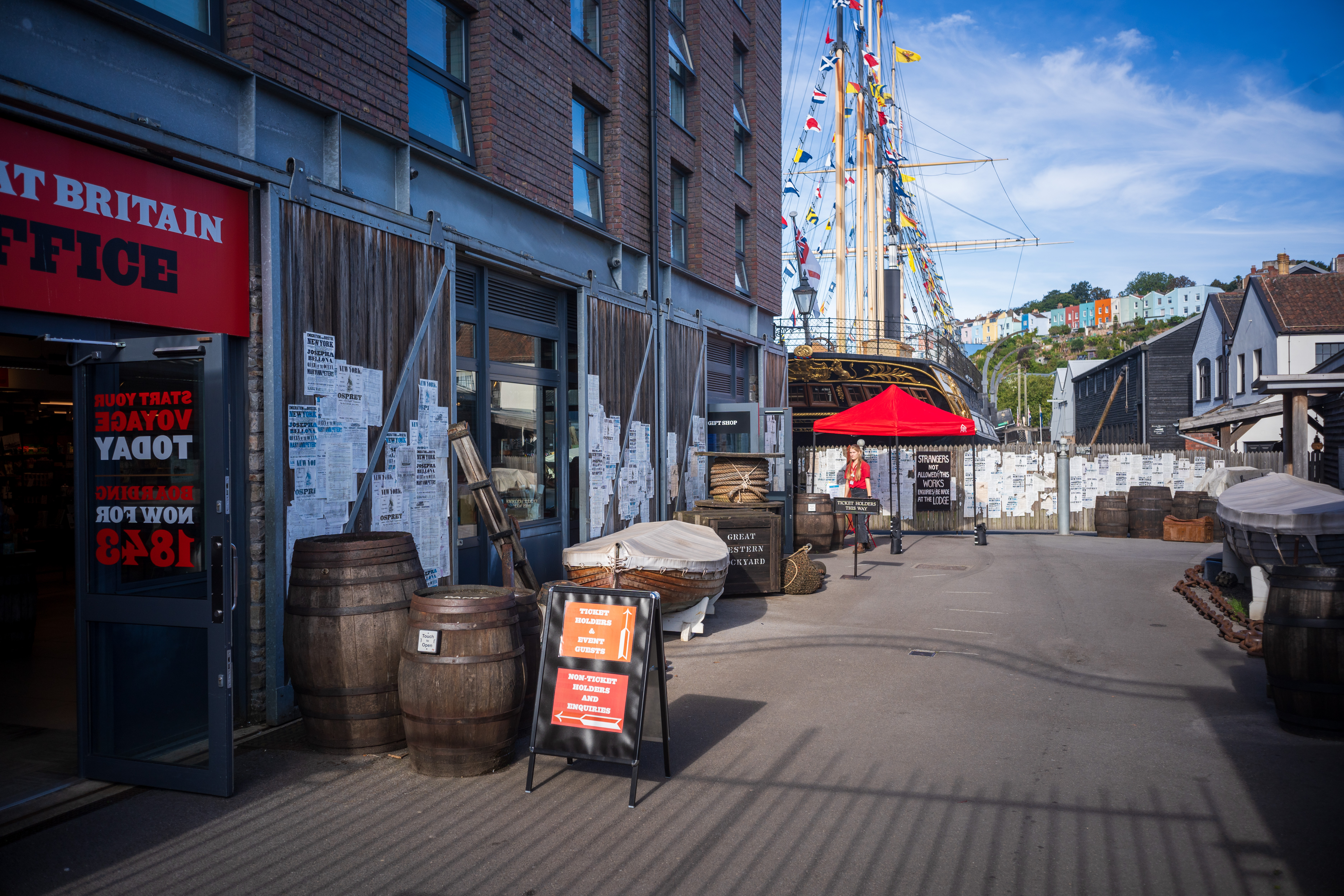

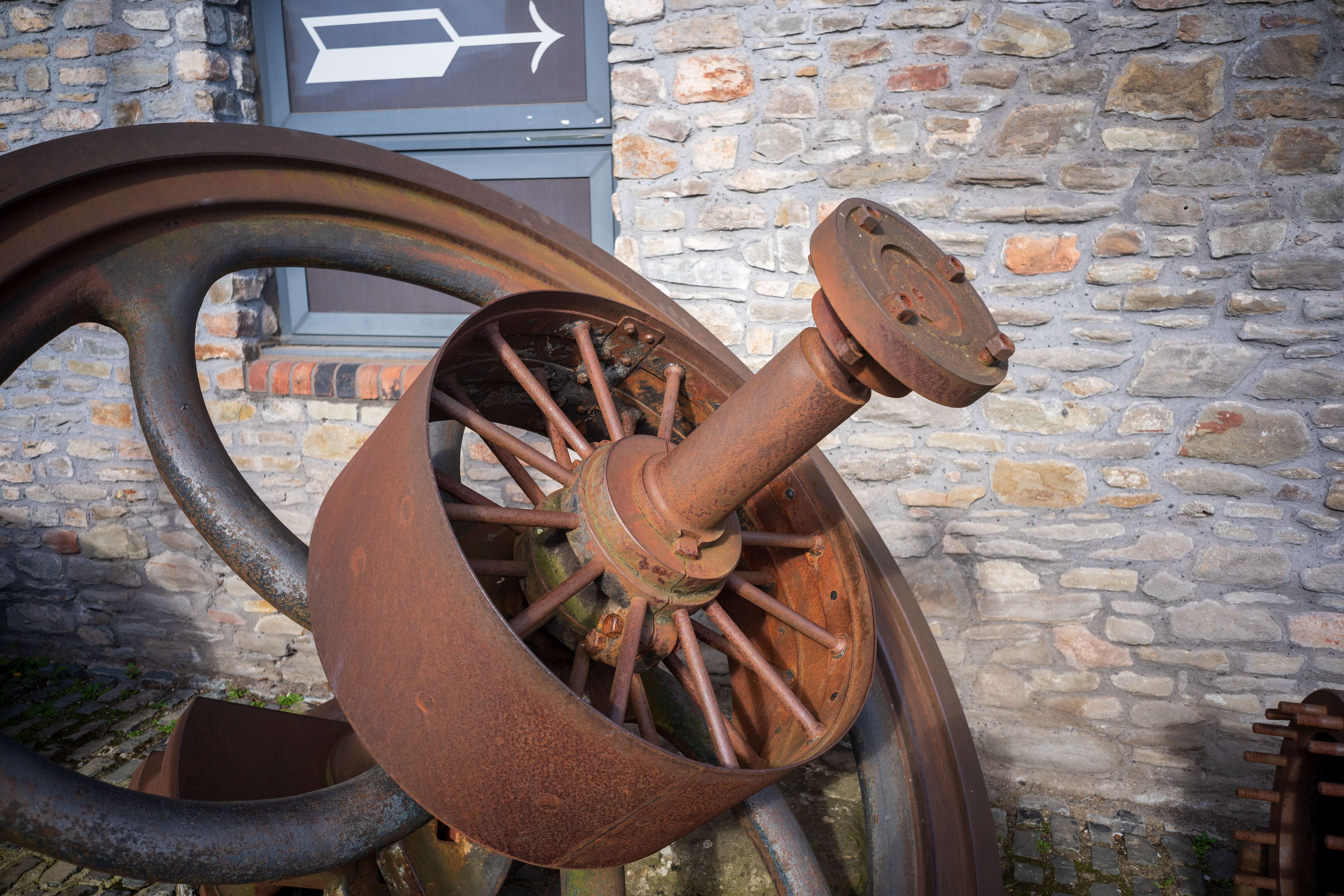







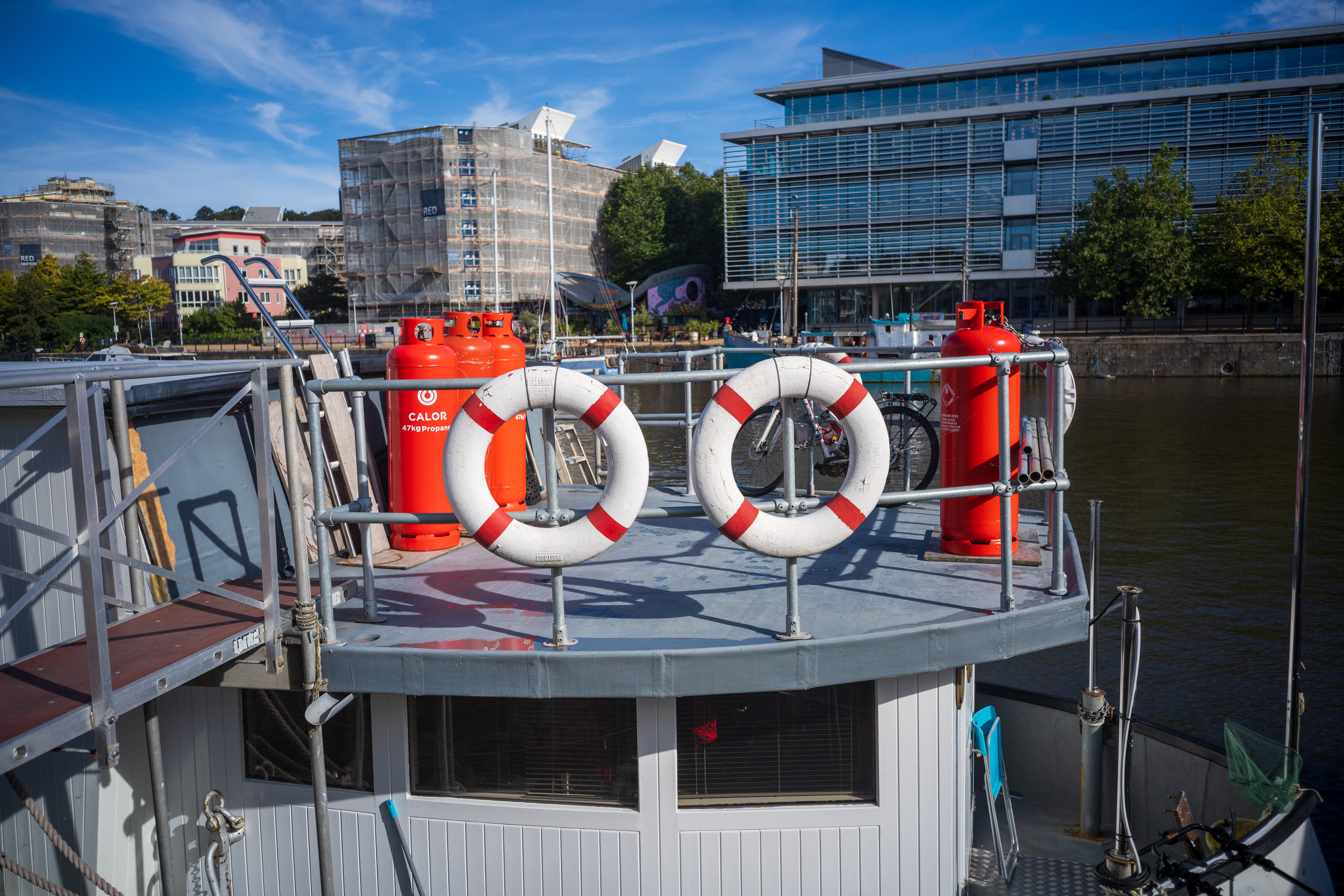

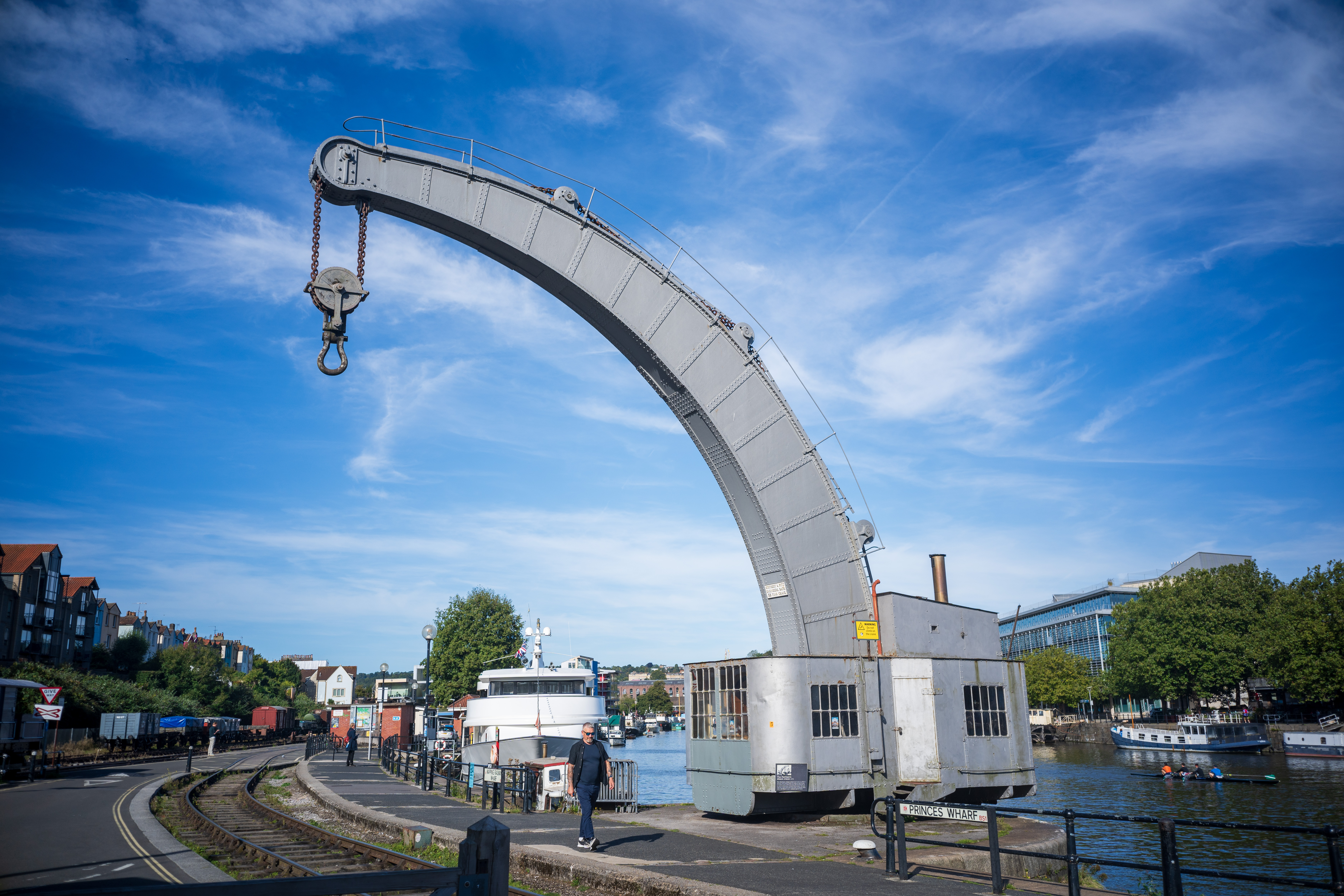
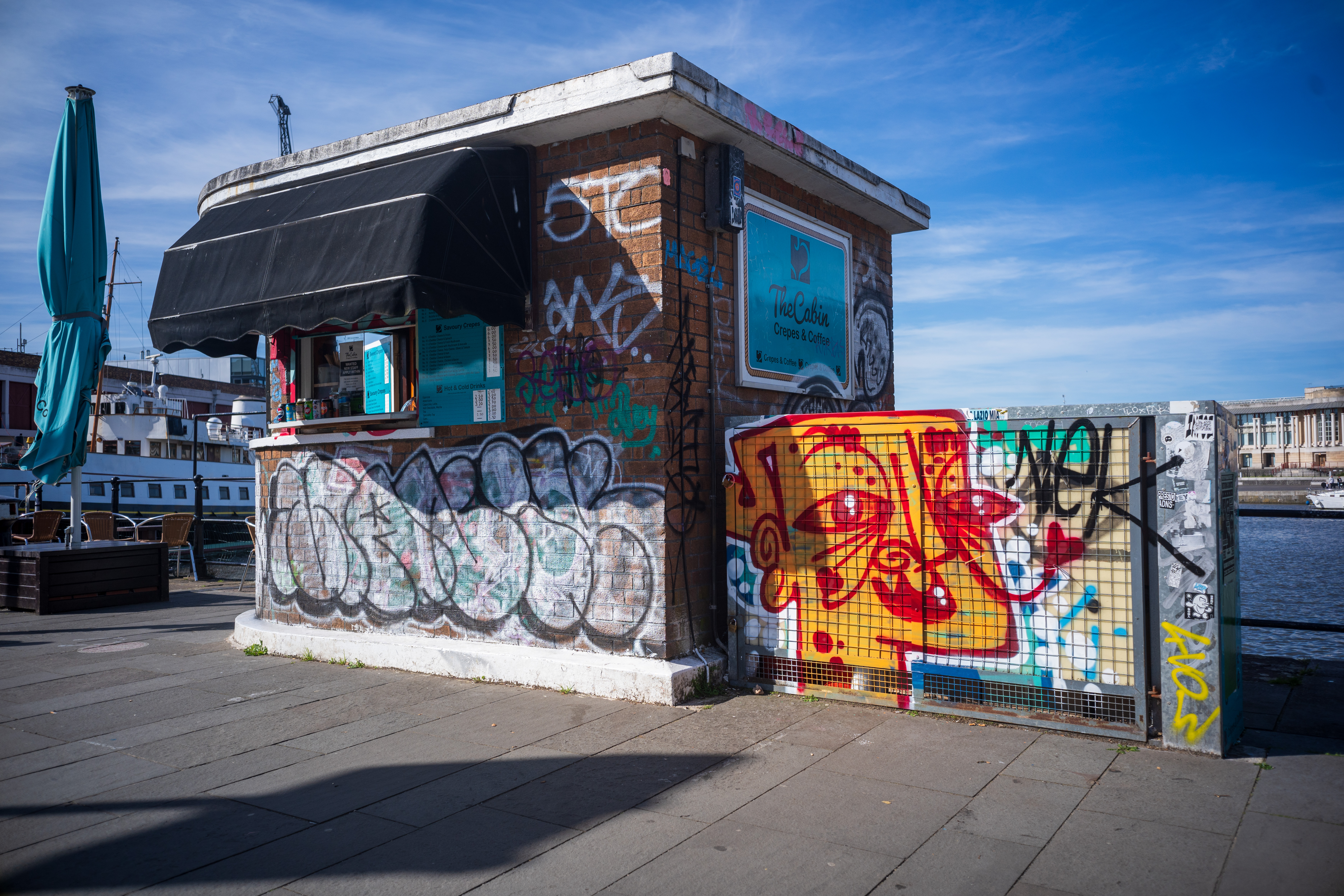

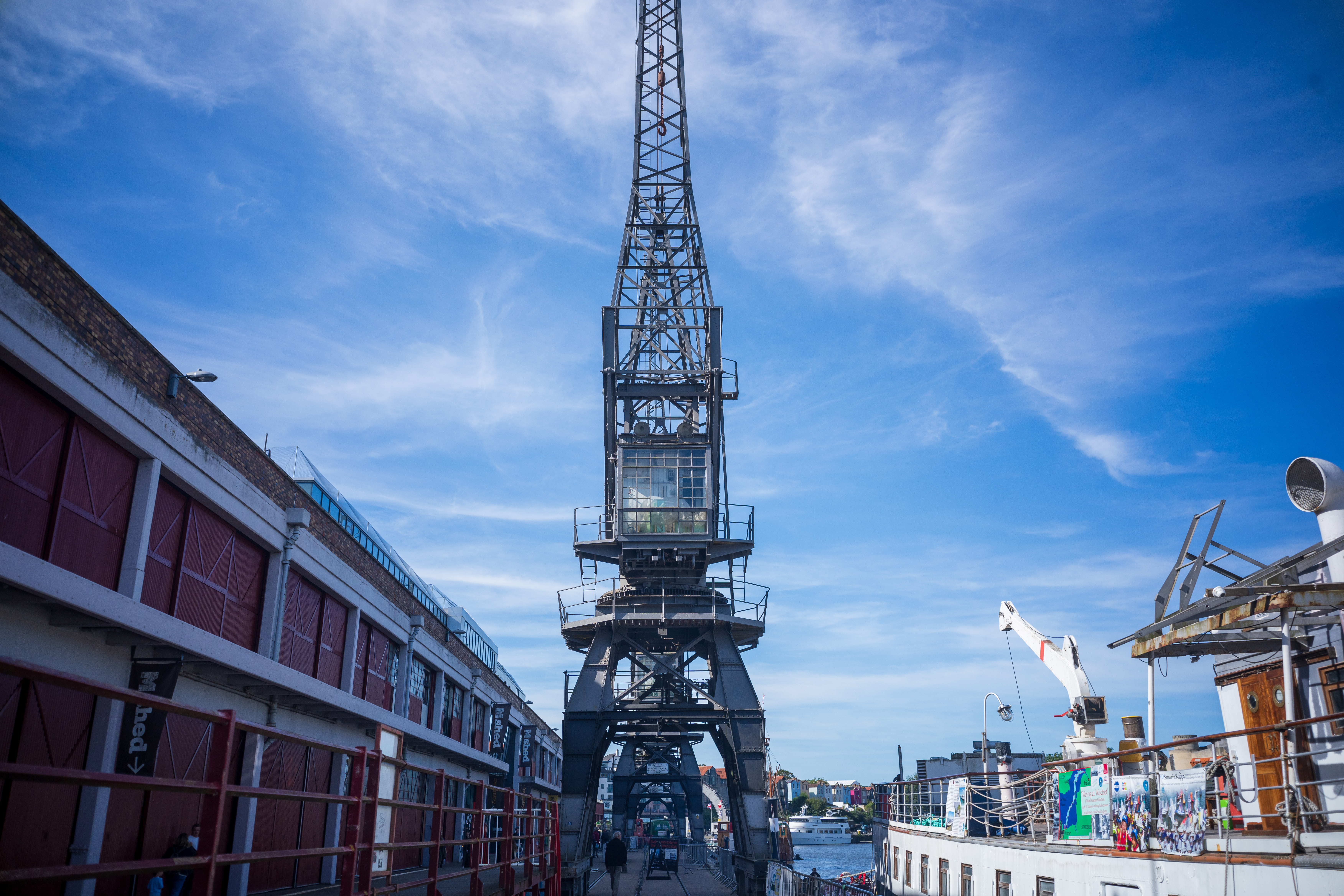
Viltrox AF 28mm F4.5 FE: Lab Results
We run a range of lab tests under controlled conditions, using the Imatest Master testing suite. Photos of test charts are taken across the range of apertures and zooms (where available), then analyzed for sharpness, distortion and chromatic aberrations.
We use Imatest SFR (spatial frequency response) charts and analysis software to plot lens resolution at the center of the image frame, corners and mid-point distances, across the range of aperture settings and, with zoom lenses, at four different focal lengths. The tests also measure distortion and color fringing (chromatic aberration).
Sharpness:
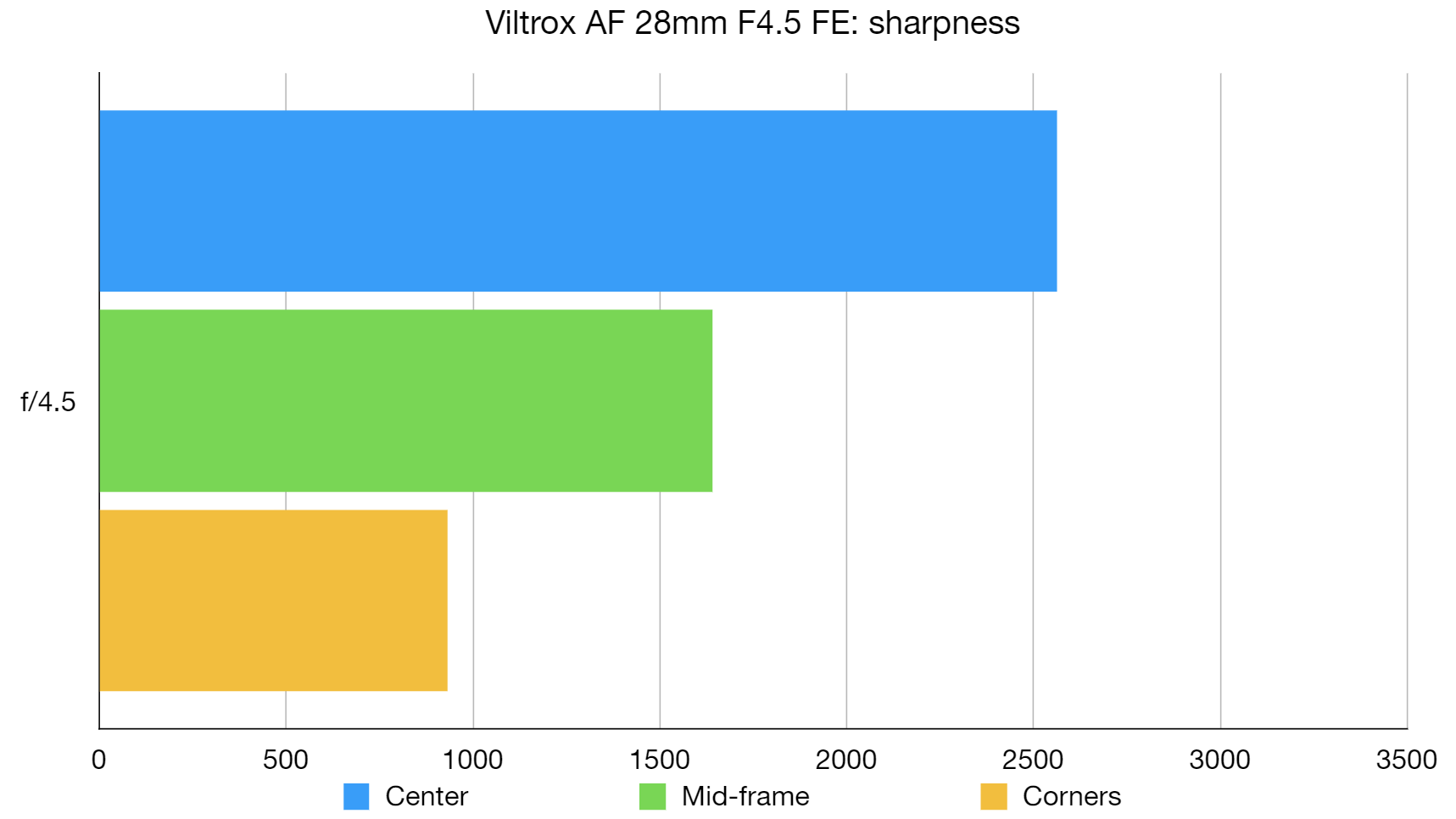
Sharpness is excellent in the central region of the image frame but drops off to average levels between the center and the edge. At the extreme edges of the frame, sharpness is merely mediocre.
Fringing:
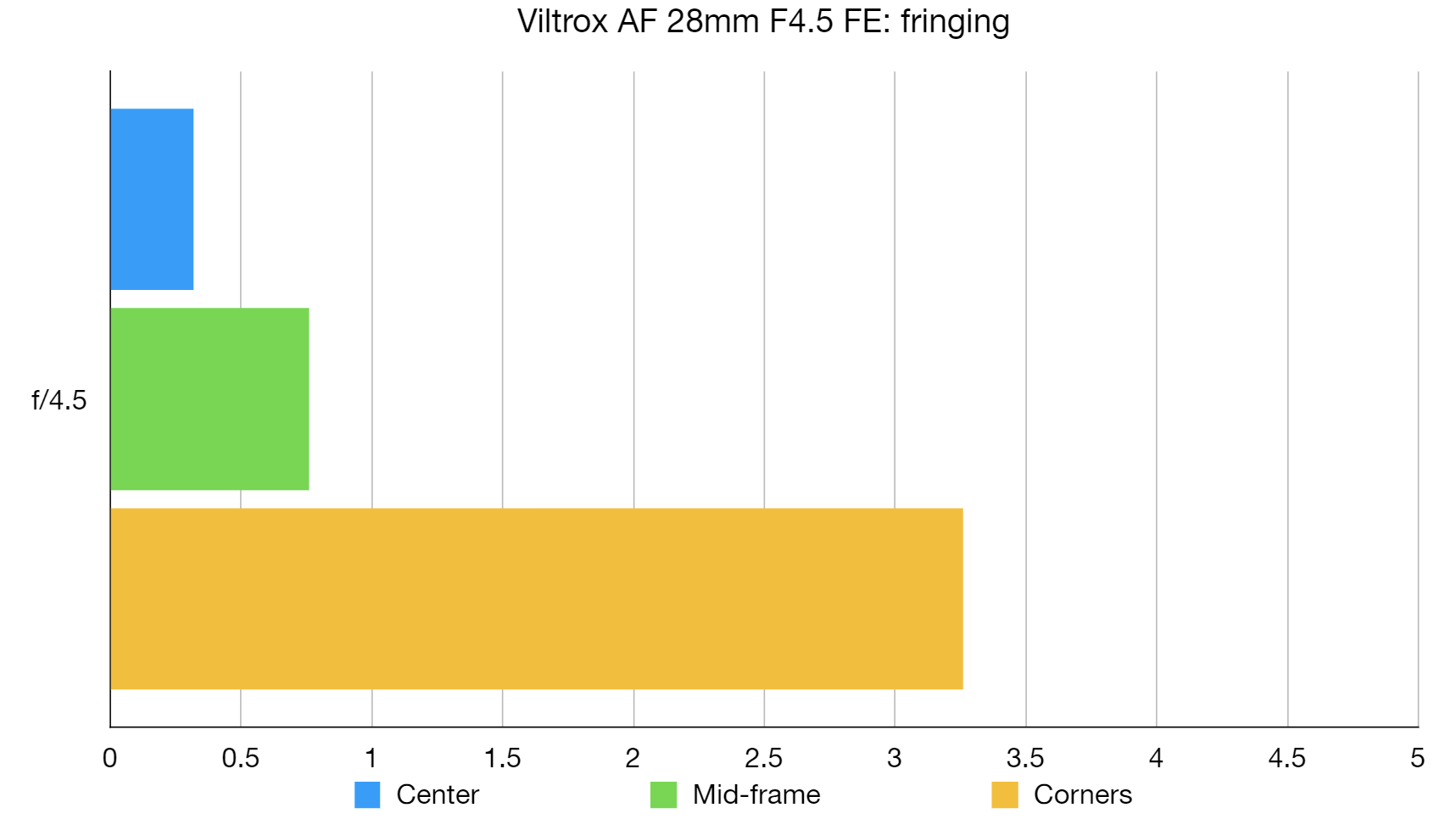
There’s only fairly minimal color fringing across most of the image frame but it can become very noticeable towards the edges and corners if automatic correction is switched off in camera, or you don’t take care of it when editing images.
Distortion: -0.5
There’s just a hint of barrel distortion which will generally go unnoticed, even without applying any correction during RAW image processing or when editing JPEG images.
Viltrox AF 28mm F4.5 FE: Verdict
I feel that the Viltrox AF 28mm F4.5 FE is the last word in convenience and portability, thanks to it’s incredibly small and lightweight build. I really like using it for street photography and for walkabout/travel shooting, as it keeps size and weight to an absolute minimum. I’m not overly fussed about the lack of a manual focus ring and, in most respects, I was very pleased with the lens’s image quality. Being unable to adjust the aperture can be a problem and I found the lens was quite susceptible to flare, so it’s a shame there’s no hood for it. Ultimately though, it’s a fun lens that keeps things simple.
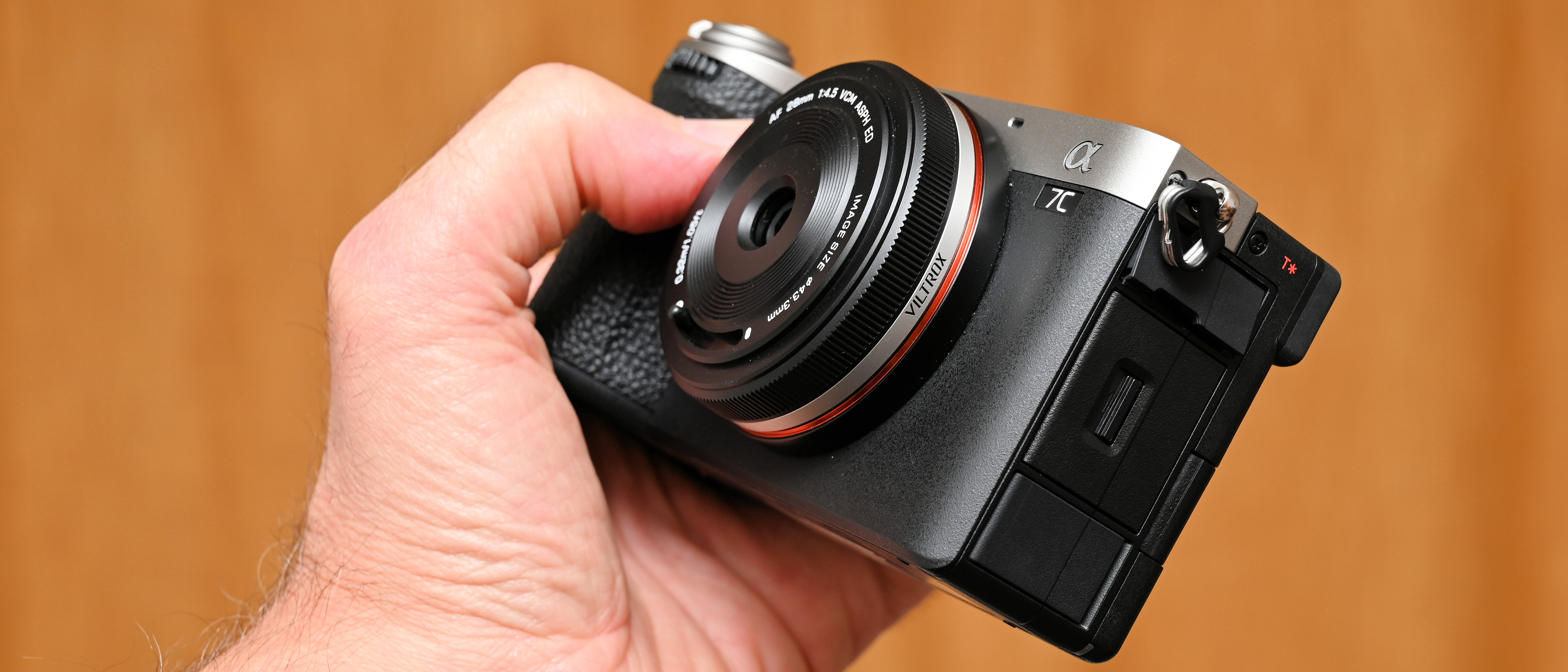
Should you buy the Viltrox AF 28mm F4.5 FE?
✅ Buy this...
- You want the smallest and lightest lens for your camera, keeping the size and weight to an absolute minimum.
- You like a fixed focal length of 28mm on your full-frame camera, or a more standard field of view equivalent to 42mm on your APS-C format body.
🚫 Don't buy this...
- You don’t like being stuck with an f/4.5 aperture that you can’t adjust, as the lens has a fixed aperture.
- You like being able to focus manually. The lens has a very effective autofocus motor but no manual focus control ring.







